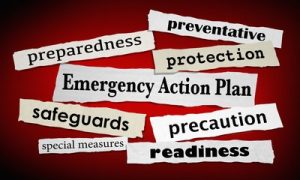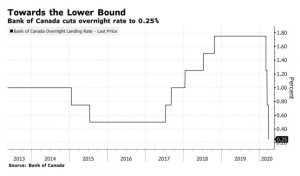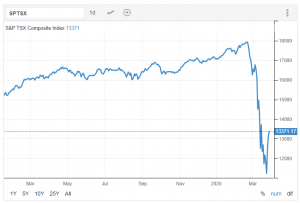Welcome to the June issue of my monthly newsletter!
Summer is just around the corner and I have some great articles for you this month! I have compiled some helpful tips on what you need to know BEFORE you start house-hunting, as well as why getting pre-approved matters. Plus, I have included some fun tips on staying cool and saving money during the summer months! Have fun out there and don’t forget your sunscreen!
Thanks again for your continued support and introductions! Have a great month.
What to Know BEFORE You Start House-Hunting
As exciting as it is to start your journey towards home ownership (or even up- and down-sizing), there are a few things you should consider first.
Most importantly, you need to determine your purchase range. Having the proper budget for your future home is the best way to ensure future financial success! To create a proper budget, you need to look at your monthly income and expenses to determine how much you can afford in monthly mortgage payments. Download my Mortgage Toolbx app directly above this article and create a profile today to access all of the amazing features, including mortgage estimates and budgeting tools. From there, you can determine your purchase price! Ideally, it is best to try and find a home that fits your needs that is below your maximum budget, which will give you a lower mortgage payment and a little more financial freedom and security for the future.
Beyond determining what you can afford, you need to identify your housing needs. It is important to know that, unless you build it yourself, no home will have everything you are looking for. However, you can find a home with most of the things you want and all of what you need if you are able to be a little bit flexible and realistic about your deal breakers. You should have a list of your must-have items that you cannot do without, such as needing a second bathroom or a third bedroom for a growing family. Your list of must-have items, or needs, should be things you cannot change; flooring and paint color should never be on this list.
Once you have your list of needs and your budget, you can connect with me and begin the pre-approval process (more information on that below). I can also help to connect you with a real estate agent to begin your search.
Remember, whether it is your first or fourth house, home-hunting can be a process. Be prepared to revisit your list and homes several times to find the right fit. It is out there! As long as you stay within your budget, you will not only build equity in your new home but you will have a solid financial foundation to continue growing from.
Advantages of a Pre-Approval
Getting pre-approved can be a vital step to the home-buying process! But don’t confuse this with pre-qualification; you can get a pre-qualification through the My Mortgage Toolbox app to determine what you might qualify for. Pre-approval, on the other hand, means that a lender has stated (in writing) that you do qualify for a mortgage and what amount, based on your current income and credit history. A pre-approval usually specifies a term, interest rate and mortgage amount and is typically valid for a brief period of time, assuming various conditions are met.
In order to get pre-approved, you must submit and verify your financial history. I can walk you through this process and assist in finding you the best mortgage to suit your needs. Not only will getting pre-approved help speed up the process when you do find that perfect home, but it also helps determine the most accurate budget to fit your needs and the actual home price you can afford.
In fact, pre-approval can help you to determine three very important things:
The maximum amount you can afford to spend
The monthly mortgage payment associated with your purchase price range
The mortgage rate for your first term
Not only does getting pre-approved make the search easier for you, but helps your real estate agent find the best home in your price range. Temptation will always be to start looking at the very top of your budget, but it is important to remember that there will be fees, such as mandatory closing costs, which can range from 1 to 4% of the purchase price. Factoring these into your maximum budget can help you narrow down a home that is entirely affordable and ensure future financial stability and security.
While getting pre-approved doesn’t commit you to a single lender, it does guarantee the rate offered to you will be locked in from 90 to 120 days which helps if interest rates rise while you are still shopping. If interest rates actually decrease, you would still be offered the lower rate.
Another benefit to pre-approval is that, when it comes time to purchase, pre-approval lets the seller know that securing financing should not be an issue. This is extremely important for competitive markets where lots of offers may be coming in.
Protecting Your Pre-Approval
Once you have gone to the trouble of getting pre-approved and determining the boundaries of your budget and mortgage payments, you will want to make sure that you take actions to protect the rate you have been offered.
To protect your pre-approval, there are a few things to keep in mind:
Refrain from having additional credit reports pulled once you have been pre-approved
Refrain from applying for new credit, closing off credit accounts or making large purchases until after the sale is complete
Be prepared to show a paper-trail – any unusual deposits in your bank account may require explanation. Also, if your down payment comes from savings, the bank will want 90 days of statements to ensure the funds are accounted for.
5 Tips to Stay Cool & Save This Summer
Summer is just around the corner and doesn’t stick around for long, so make sure you enjoy it! We have some great tips for staying cool AND saving money while you do.
- Use Portable And Ceiling Fans
Instead of cranking the A/C (and your electricity bill) consider cooling down with portable and ceiling fans. not only are these great options if your A/C unit is on the brink, but they can help ease the stress on your unit when used together or help eliminate the need for it all together. Portable fans work by creating a breeze, helping to circulate the air and causing a wind-chill effect that hits your skin and helps keep you cool. For an extra blast of coolness, place a bowl of ice in front of the fan to create a refreshing mist of air! - Avoid Cooking On The Stove
While cooking indoors can be a great way to warm up the house in the winter, it will create unnecessary heat in the summertime. Instead, consider cold meals such as salads or breaking out the BBQ for grilled chicken or steaks - Keep The Curtains Drawn
As nice as it is to let the sun in, this can increase the heat in your house and cause extra stress on your A/C unit and fans. Instead, keep the curtains drawn (at least on very hot days) to help your home stay cool.
Maintain the Air Filters
As always, the change of the season is a good time to check the air filters in your home. Dirty filters slow airflow and make the system work harder, which can lead to expensive repairs down the road. Replacing your air filters every three months is ideal to keep dirt and dust out of your system.
Swap to Energy Efficient Lighting
You have probably heard some of the reasons why LED lights have become so popular, but did you know that they also produce 75 percent less heat than incandescent bulbs, and can help keep room temperature down? This can help reduce monthly bills and keep your home more comfortable during the summer season!


